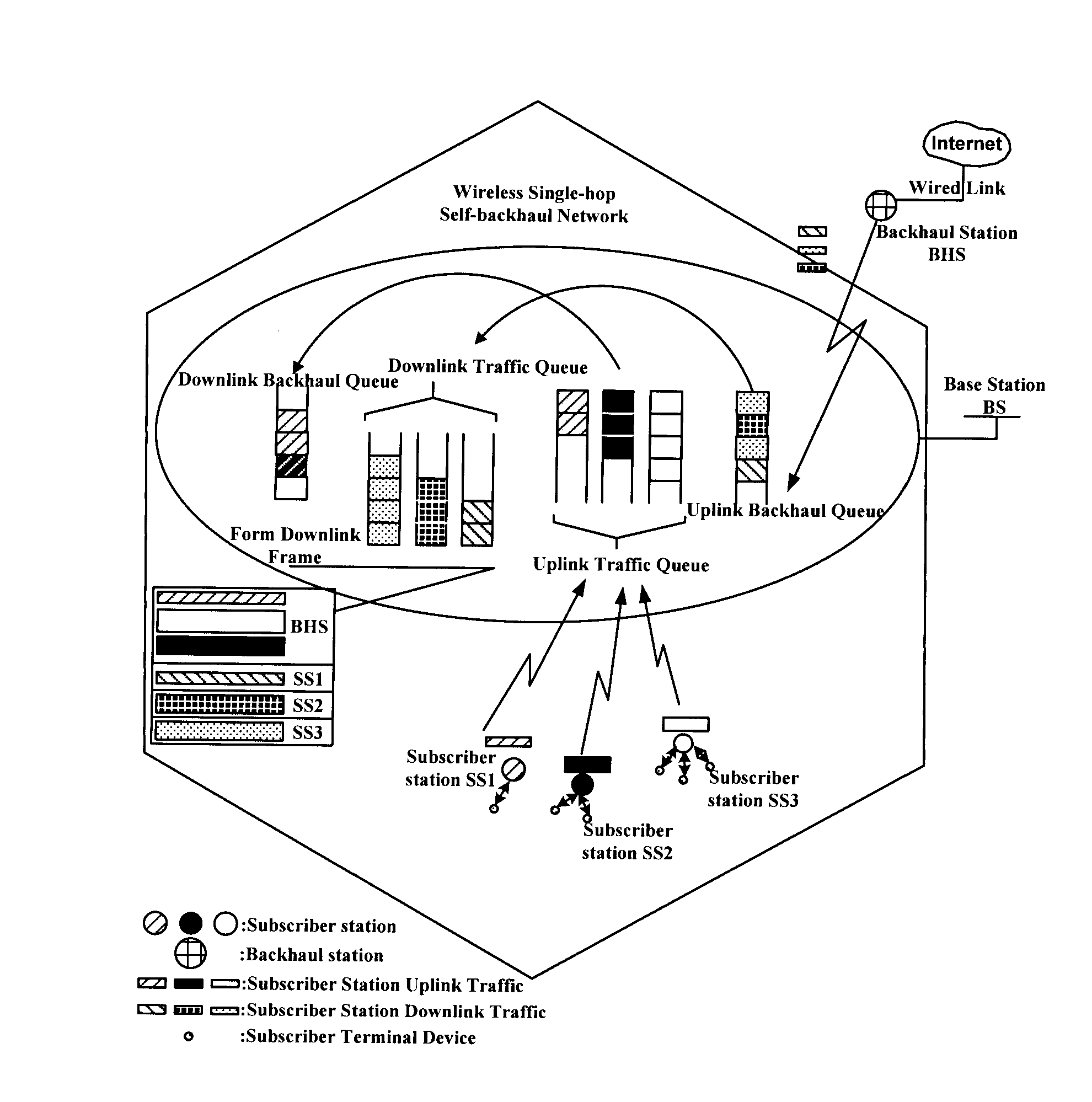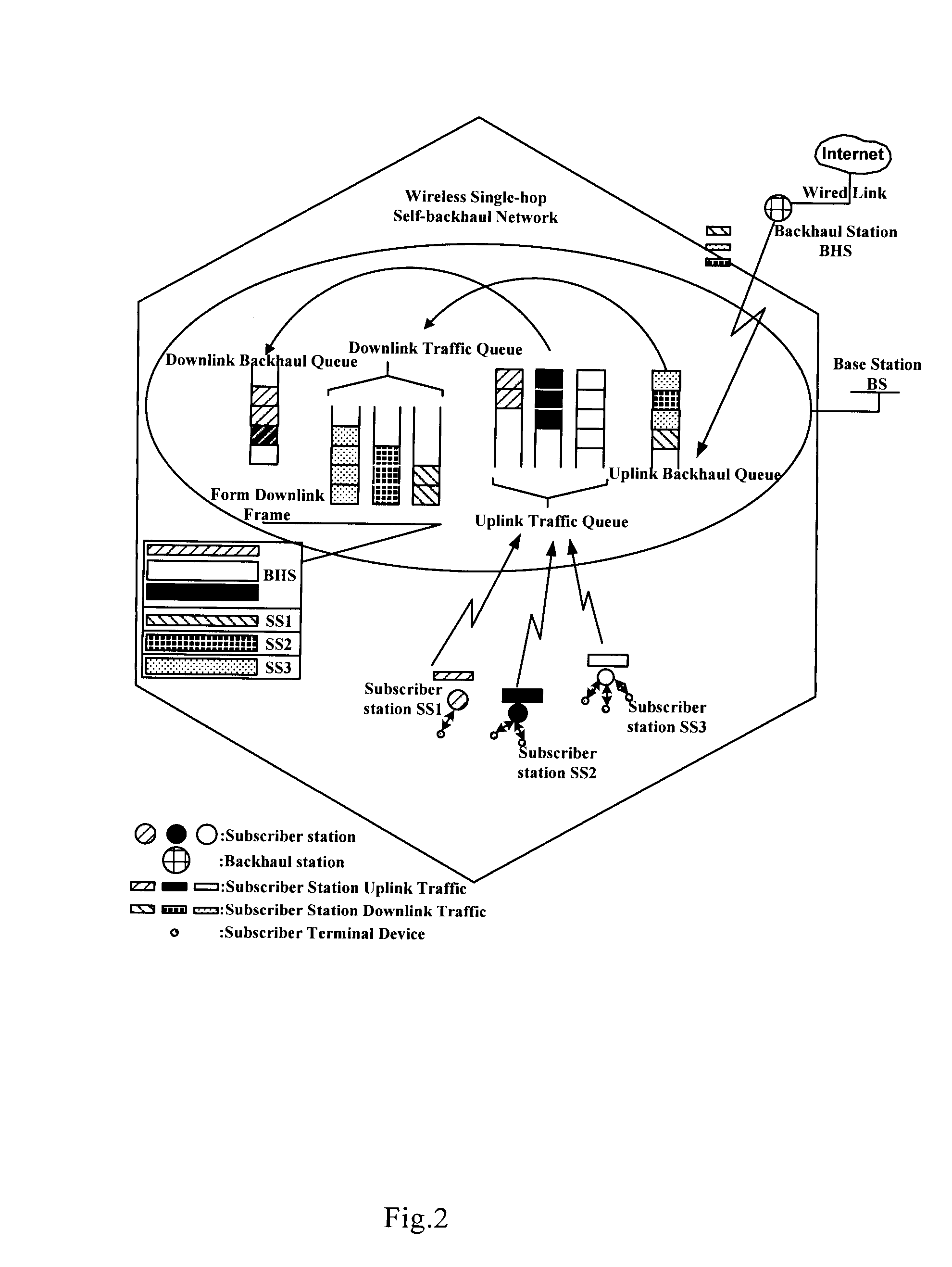Method and base station for bandwidth allocation in wireless single-hop self-backhaul networks
a wireless self-backhaul and wireless self-backhaul technology, applied in the field of wireless communication networks, can solve the problems of destroying the bandwidth fairness of uplink and downlink traffic for asymmetric services, sharp reduction of system bandwidth utilization ratio, and unsuitable wireless single-hop self-backhaul network bandwidth allocation methods, etc., to achieve ideal fairness for uplink and downlink bandwidth and high bandwidth utilization ratio
- Summary
- Abstract
- Description
- Claims
- Application Information
AI Technical Summary
Benefits of technology
Problems solved by technology
Method used
Image
Examples
Embodiment Construction
[0023] Referring to the accompanying drawings, a detailed description will be given to the present invention in terms of embodiments. It should be understood that the present invention is not limited to the embodiments.
[0024]FIG. 3 is a schematic view of a bandwidth request in the wireless single-hop self-backhaul network according to an embodiment of the present invention. In the present embodiment, the service configuration is as follows: in a cellular network there are two video conference services and forty VoIP speech services, and other subscriber services include four common services, namely FTTP, HTTP, database access and Email.
[0025]FIG. 4 is a flowchart of a method for bandwidth allocation in a base station of a wireless communication network according to an embodiment of the present invention, wherein said wireless communication network further comprises a plurality of subscriber stations and a backhaul station.
[0026] As shown in FIG. 4, uplink and downlink bandwidth a...
PUM
 Login to View More
Login to View More Abstract
Description
Claims
Application Information
 Login to View More
Login to View More - R&D
- Intellectual Property
- Life Sciences
- Materials
- Tech Scout
- Unparalleled Data Quality
- Higher Quality Content
- 60% Fewer Hallucinations
Browse by: Latest US Patents, China's latest patents, Technical Efficacy Thesaurus, Application Domain, Technology Topic, Popular Technical Reports.
© 2025 PatSnap. All rights reserved.Legal|Privacy policy|Modern Slavery Act Transparency Statement|Sitemap|About US| Contact US: help@patsnap.com



